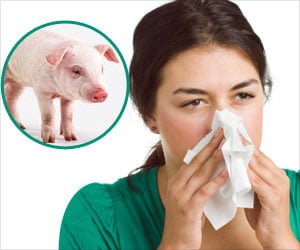People over the age of 50 who are hospitalized with swine flu are the group most likely to die from the illness, but (A)H1N1 flu remains a young person's illness, US researchers said Tuesday.
Around 11 percent of the 1,088 cases of swine flu reported in California between April 17 and August 22 died, and although infants were most likely to be hospitalized with (A)H1N1 influenza, the death rate was higher among older people, researchers at the California department of health said."Overall fatality was 11 percent (118/1,088) and was highest (18-20 percent) in persons aged 50 years or older," the researchers wrote in the study, which will appear in Wednesday's issue of the Journal of the American Medical Association.
The death rate among children younger than 18 years, who made up around a third of swine flu cases reported in California in the first 16 weeks of the outbreak, was seven percent, the study said.
US health officials have repeatedly characterized swine flu as "a younger person's disease" and put children and young adults under the age of 25 on a list of priority groups for vaccination against the disease.
More than half of hospitalizations and nearly a quarter of deaths in the United States from pandemic H1N1 have involved people under the age of 25.
"In contrast with the common perception that pandemic 2009 influenza A(H1N1) infection causes only mild disease, hospitalization and death occurred at all ages, and up to 30 percent of hospitalized cases were severely ill," the Californian researchers said.
Advertisement
More than two-thirds of the California patients who were hospitalized with H1N1 had underlying medical conditions that have been previously associated with complications in flu cases, and some new conditions, such as obesity and high blood pressure.
Advertisement
The United States is battling swine flu amid shortages of vaccine, which has seen states and counties cancel inoculation clinics, and of children's anti-viral medicine, which last week saw federal authorities raiding the strategic stockpile for kids' liquid Tamiflu.
Pandemic H1N1 flu has already claimed the lives of more children than seasonal flu typically does during an entire flu season, which runs from August until May.
More than 5,700 people have died worldwide since the virus was first discovered in April, with most of the deaths, 4,175, in the Americas region, the World Health Organization said Friday.
Source-AFP
SRM










